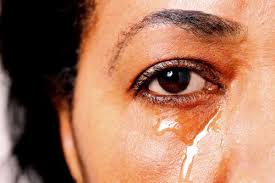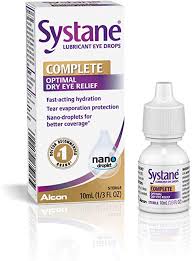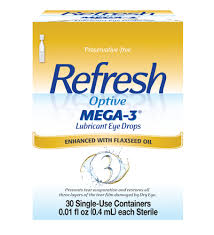Watery Eyes = Dry Eyes? Actually, yes.

When I was a kid I would help my dad in the yard. It was good work and I usually enjoyed it. Unless it was 6 or 7 AM on a Saturday. But even that you get over pretty quick.
But when I was really little I’m sure it was more work to actually have me “help”. Thinking I was part of the solution, when really I was probably making things worse. And that, my friends, is what watery eyes is all about.
If you’ve ever heard your eye doctor describe watery eyes as a symptom of dry eye, you understandably thought they weren’t actually listening. But, as wild as it sounds, watery eyes is a very common symptom of dry eye.
When your eyes get dry, your brain is like me when I was 7. Thinking I was helpful, but really just making a bigger mess of things. The brain recognizes the dryness and floods the eye with *reflex* tears. Not a bad thought, but these aren’t the right type of tears. Reflex tears as watery and just roll off the surface of the eye. What we need is oily tears, which do a better job of adhering to the surface of the eye and reduce tear evaporation. So the end result is a cycle of eyes drying out, reflex tears flooding the surface, which then dry out and make way for more reflex tears.
So what can you do about that? Use a lipid-based artificial tear. We recommend Systane Complete and Refresh Optive Mega-3. Systane Complete is a preserved drop that can be used no more than 4 times a day. If more than 4 uses are needed, switch to the preservative-free Refresh Optive Mega-3.
Doing a warm compress with lid massage is another option to increase the lipid (oily) layer to your tears. See our previous post here for more information on that treatment.
In the long-run, the best option is to reduce dryness overall. Dry eye disease has many causes and there is no silver bullet for treatment. But addressing your specific condition can lead to more comfort, less dryness, and less watering. For an individualized treatment strategy, call us today at 480-656-7739 and we’ll scheduled your dry eye consultation.
Leave a Reply Cancel reply
follow us
schedule an appointment
website designed by katie & Co. Design
come visit us AT EITHER LOCATION!
The Eye Shop OCOTILLO
21321 E. Ocotillo #105,
Queen Creek, AZ 85142
THE EYE SHOP POWER
18550 E. RITTENHOUSE #100,
Queen Creek, AZ 85142

